Drone Applications in Water Quality Research?
14 March 2018 4:42pm
6 June 2018 6:48pm
Hi CHippie - I am wondering how your thoughts are progressing on this topic? Please let us know an update.
Thanks
Michael
9 June 2018 12:10am
Hi Michael!
Thanks so much for following up. I have yet to really get my feet wet with drones & algal blooms (my water quality issue of interest at the moment), but what I gathered from my literature review is that hyperspectral cameras are a much more precise option than multispectral cameras for algal identification. I'm hoping to try out a red-edge camera to see if there is anything spectrally interesting, as I do not currently have access to a hyperspectral camera. For the time being, I am hoping to play with a MicaSense camera over wet habitat and see if anything can be observed. I'll keep you posted if I find anything of interest!
Thanks,
Chippie
HWC Tech Challenge: Smart Electric Fence Solution
 Shadowview Foundation
Shadowview Foundation
5 June 2018 12:00am
2018 Browning Trail Cameras
27 May 2018 9:30pm
Recommendations Needed: Infrared/Thermal Cameras to Install in conservation perimeter fence
17 May 2018 8:06am
Using app-building tools for conservation monitoring
1 February 2018 5:19pm
15 March 2018 1:19am
I've just started looking at an app called ProofSafe, which will probably do what you want.
16 May 2018 5:42am
Hi @djscrazyhorse
I've been looking at a similar thing. I actually decided against it in the end, and instead to take a tack of developing a solution for a particular niche.
I just published an article about the thought process here:
https://medium.com/mdes-environmental-social-impact/photo-monitoring-for-the-flax-roots-557749cdb6f3
Would love to hear your thoughts.
Any reason you went with those particular App Builder solutions, out of interest?
Photopoint Monitoring Solutions?
2 May 2017 1:29am
19 May 2017 11:12am
Hi Sam!
Some weeks ago I analyzed in my website an app called GrowApp (https://www.greenappsandweb.com/en/android-en/four-seasons-of-the-year-timelapses-growapp/) that allows you to create timelapses relate with the phenology of the plants, to study how they are adapting to the climate change. I don't know if something like this could be useful to you
Judit
8 September 2017 5:24am
Thanks for sharing this Judit. I've had a play with GrowApp now, and my reflections are:
- the map centric view is probably really useful for people who are monitoring a series of trees / plants, but it doesn't serve as a particularly helpful presentation method for conservation groups in my opinion. Most groups have to upload a series of static images to a web form / send by email, to funders. Sending a link to the map would probably get them a nod of approval, but it wouldn't help them comply with their funding contract.
- I really like the way the photostitching is fully automated. Just take more than one photo and you get a little rolling timelapse.
- They also executed the 50% opacity overlay in a really nice simple way, which makes it easier to line up, though I think there could be a little more automation of the moment of capture (a la Google Photoscan) to make sure they really line up.
So overall, definitely an interesting example, but it's definitely made for another use (low friction citizen science) as it's primary flow and interface.
16 May 2018 3:49am
Hi everyone,
I decided at the end of last year, that it wasn't good enough that there's no good Photo Monitoring Apps on the market, and started to design my own.
Here's a blog post about that process:
Photo Monitoring For The Flax Roots

SMART 2017 Annual Report
15 May 2018 5:39pm
Feedback Needed: Time lapse imagery
15 May 2018 11:36am
Reptile Detector Dogs
8 August 2016 11:35am
14 May 2018 9:37pm
Hi Steph and all,
I don't work with detector dogs directly but colleagues of mine in the Pedernales province of the Dominican Republic have used a dog to locate iguana nests in a dry environment. Iguana nests (which are underground) can be found by looking for a typical hole in the ground; unfortunately, a local species of spider makes a very similar hole, which make iguana nest searches difficult (since you don't want to break the nest open) and time-consuming. Biologists at Grupo Jaragua, a Dominican environmental NGO, thus trained a dog to successfuly smell for iguana nests.
Their dog sadly died after eating poison intended to kill stray dogs but did find a number of iguana nests for several years.
- Yvan
[ARCHIVED]: Camera trapping workshop, London
14 May 2018 12:38pm
From drone swarms to tree batteries, new tech is revolutionising ecology and conservation
 Euan Ritchie
Euan Ritchie
9 May 2018 12:00am
Recommendations Needed: Best sensors and cameras to install along fence gaps in a conservancy
16 April 2018 10:38am
2 May 2018 12:27pm
Hi Damian,
This may be part of your conversation with Alasdair and the ZSL team already, but you might want to connect with @Institute+IRNAS as well. They're collaborating with Alasdair's Arribada Initative, ZSL and others to tackle some of the challenges you've also been looking into (e.g LoRA systems). There's some more info about their work here: http://irnas.eu/conservation
Luka (if it is indeed you who is manning the Institute IRNAS member profile here on wildlabs), maybe you can jump in here?
Steph
2 May 2018 1:16pm
Hello Stephanie,
Thank you for the Introduction. This is nice and I think they can be very helpful to us at this moment. Especially on the acoustic sensors and LoRa network setup initiative.
Looking forward to getting intouch with them.
Regards,
Damian
7 May 2018 11:04am
Hi Damien,
Lora technology enables a range of very efficient solutions that you can deploy over a large area. We provide consultancy and field support for deploying such networks and work with Arribada team on developing custom hardware solutions for various applications in the conservation field. I suggest you explore the existing options and let us know if you need more customized solutions.
Regards,
Luka
Institute IRNAS
Detection dogs used for border control
5 April 2018 12:51pm
26 April 2018 4:43pm
Hi Katrin,
We are working with Panthera in Kyrgyztan on wildlife trafficking at the border. I believe you may be in touch with the program? We have helped Border patrol layer on snow leopard, argali and saiga as well as falcons. I would be happy to put you in touch with Aimee Hurt, who has worked there with the teams. Or you can reach out to Tanya Rosen with Panthera to ask about that program. We are happy to help share experience.
Best, Megan
30 April 2018 10:32am
Hi Megan
That sounds great, thank you! I will message you.
Best
Katrin
Tethered UAVs
14 March 2018 4:29pm
27 April 2018 11:46pm
Thanks - I did look into blimps but the helium problem is a big one for remote work. I do have a couple UAVs but the area I work is tricky (airport, waterdrome, and helicopter landing with occasional ships that carry helicopters). my hope was for a tethered solution that could run for longer than the 20min battery life of a drone. thanks for the info.
27 April 2018 11:53pm
thanks I adnt thought of kites - I will have to test one in the field this year. I imagined one of the advantages of a tethered UAV is that I can parasitize all the camera elements (gimble stabilization, pan/tilt/zoom, and real time viewing of the imagery). Maybe I could just secure a cheap UAV under a kite... I wonder how I choose the correct kite size.
28 April 2018 5:13pm
hi Stephen,
Kites have gimbals too (ranging from simple strings to metal rigs) and you can connect to a camera much like a drone. In my case I have a gimbal hanging on a string, and to connect to my camera I get live connection and can change settings with the GoPro app! this website has lots of info - size of the kite depends on payload (some people fly SLRs!) and wind.
Www.kapshop.com
Recommendations Needed: Camera for remote work using Irriduim for image upload
15 February 2018 1:02pm
9 April 2018 12:30pm
Hi swinnard,
we have built a system this year for Arribada Initiative http://blog.arribada.org/ that is working closely with ZSL that implements the functions you require to a large extent. The Arribada FMP device is open source open hardware and you can find more details here: https://github.com/IRNAS/arribada-fmp
The device has the following features:
* Solar powered
* Built-in camera
* RockBlock Iridium modem
* WiFi and LoraWAN communications (not required in you application)
* Ultrasonic distance sensor (not required in you application)
We have built a version of this device for Arribada Penguin monitoring: https://github.com/IRNAS/arribada-pmp which captures images hourly on Antarctica of penguins and stores to the SD card, without the Iridium comunication.
Note that the cost of Iridium system may be prohibitively expensive, see http://www.rock7mobile.com/products-rockblock
2000 credits for 800GBP will give about 100MB of capacity, which can translate to about one photo per day if a compressed resolution is sufficient. A full HD image will for example be 2.4MB.
A more optimal method would be to take a photo several times a day, process them using OpenCV or other image processing library to determine if the image is interesting and then send it via Iridium. This can save some data as well as generate interesting photos. All of them can be stored to the SD card and retrieved at a later point.
16 April 2018 3:26pm
Hi Institiue IRNAS,
Thank you very much for your response, it is very helpful information.
I will have a look in more detail into your camera. For us it is not possible to choose photos to be sent back, we need them all to come back via irridium, so it is definitely the part of the project that can quickly become cost prohibitive.
I've been in touch with a research group that used an Instant Detect camera from ZSL which they now want to sell, so I may well end up using that system. If not though, the system you are using looks great.
Thanks for sharing it with me.
26 April 2018 11:39pm
Dear All
Our group in Australia has developed a device for monitoring wild dogs/dingoes in remote areas and have a fully authomated system using Iridium and or 3-4G if available. This device is officially called Wild Dog Alert Node and will be capable of being deployed into remote areas, gathering image data using a unique sensor system, processing the image and sending it to the cloud where it is identified as a wild dog-dingo and an alarm is immediately triggered. In our case it is to prevent predation on livestock but this technology could easily be modified for any species. The R&D is being refined and we are expecting to start disseminating information soon in both scientific papers and general media https://invasives.com.au/research/wild-dog-alert
Audiomoth Group Purchase (Round 3)
5 February 2018 12:02pm
11 April 2018 5:26pm
Hi all,
Do to the success of Round 3 (hitting its target 15 days early and reaching the stock limit) we have started to explore the possibility of launching a 4th round, with a shorter time frame (probably 15 days) and with a limit of 250 devices. This will all come down to component stock, and finding it, so we'll update you next week (16th April) once we have confirmed it's possible.
Kind regards,
Alasdair
23 April 2018 5:36pm
Quick update from @alasdair - 'The 4th round of AudioMoth will go live Mon 30th April and there will be 250 made available. This has been made possible as we need to manufacture all those from round 3 and 4 at the same time whilst we await a stock re-order of a component.'
Alasdair has promised to post the time it goes live as it's bound to fill up quickly, given how fast the third round sold out. Stay tuned!
23 April 2018 5:53pm
Hi Stephanie, thanks for the update above. We will be doing two things this week to support the community. To meet the demand from Round 3 we require an essential component (MOSFET) and so we are planning to;
1) contact the 110 backers from this round (3) to ascertain how many have field trip deadlines and work with CircuitHub, the manufacturer, to see what's possible to meet deadlines - i.e identifiying other stockists of the missing component, or possibly an advanced run with the stock available now for those with an urgent deadline.
2) Launching a 4th Round on Monday 30th April with 250 devices available. This will have a shorter run time of 14 days and is possible as it will end shortly before the delivery of the stock needed to complete orders from both round 3 and 4, allowing us to help those who couldn't get in to round 3.
All the best,
Alasdair | Arribada Initiative
Eddy Expedition Log: Characterizing Eddies
23 April 2018 12:00am
Webinar: Artificial Intelligence for Earth, Microsoft Research
 Eye on Earth Alliance
Eye on Earth Alliance
23 April 2018 12:00am
Conservation Technology User Guidelines Issue 4: Satellite remote sensing for conservation
 Paul Glover-Kapfer
Paul Glover-Kapfer
23 April 2018 12:00am
Data Needed: Camera trap images for machine vision training
29 March 2017 8:06pm
29 January 2018 6:40pm
Just chiming in, and this might not be helpfull at all.. but I recently came across a blogpost about 'building the poor man's deep learning camera'. Especially as it touches https://www.makeartwithpython.com/blog/poor-mans-deep-learning-camera/
7 February 2018 3:22pm
Hey, this is really interesting @theraido, thanks for sharing. Kirk has a nice writing style that's really easy to understand.. to the point where I feel lulled into confidence that I'd be able to replicate the project without too much fuss (I suspect this might be rather a strong case of over confidence). I was also amused that waiting for the birds to appear at the feeder seemed to be the slowest part of the project.
It looks like it's going to be a series of tutorials, with the goal being to build an open platform for exploring crow intelligence. Eventually, he says like to identify individual crows in the wild, and give them the opportunity to pass a series of tests. So it'll be interesting to follow along and see whether he reaches this goal.
In case anyone is interested, the next tutorial posted so far is 'building the rich man's deep learning camera', where he shares how to build a self-contained deep learning camera to detect birds in the wild.
20 April 2018 4:19am
Sounds great!
I am doing the almost same thing, since here we have a problem between elephant and human living in the same area and conflict a lot. We would like to warn people when elephants are approching by camera trap's detection of elephants.
How is your work now? Maybe we could share some info and put it forward together.
Anton
HWC Tech Challenge: Thermopile Sensor Project
 Arribada Initative
Arribada Initative
19 April 2018 12:00am
Recommendations Needed: Software for sampling photos from video
6 July 2017 7:42pm
20 July 2017 3:01am
Thank you Jason :) I will check both the wildboo.org and the youtube video you sent. All the best
20 July 2017 3:02am
Thank you Peter...and cool picture :)
Best regards
Nuno
17 April 2018 8:23pm
My preference is to use Adobe Lightroom, allowing me to move forwards or backwards one frame at a time. I can also adjust the exposure. This is an example from one of my videos.
I hope this is helpful.
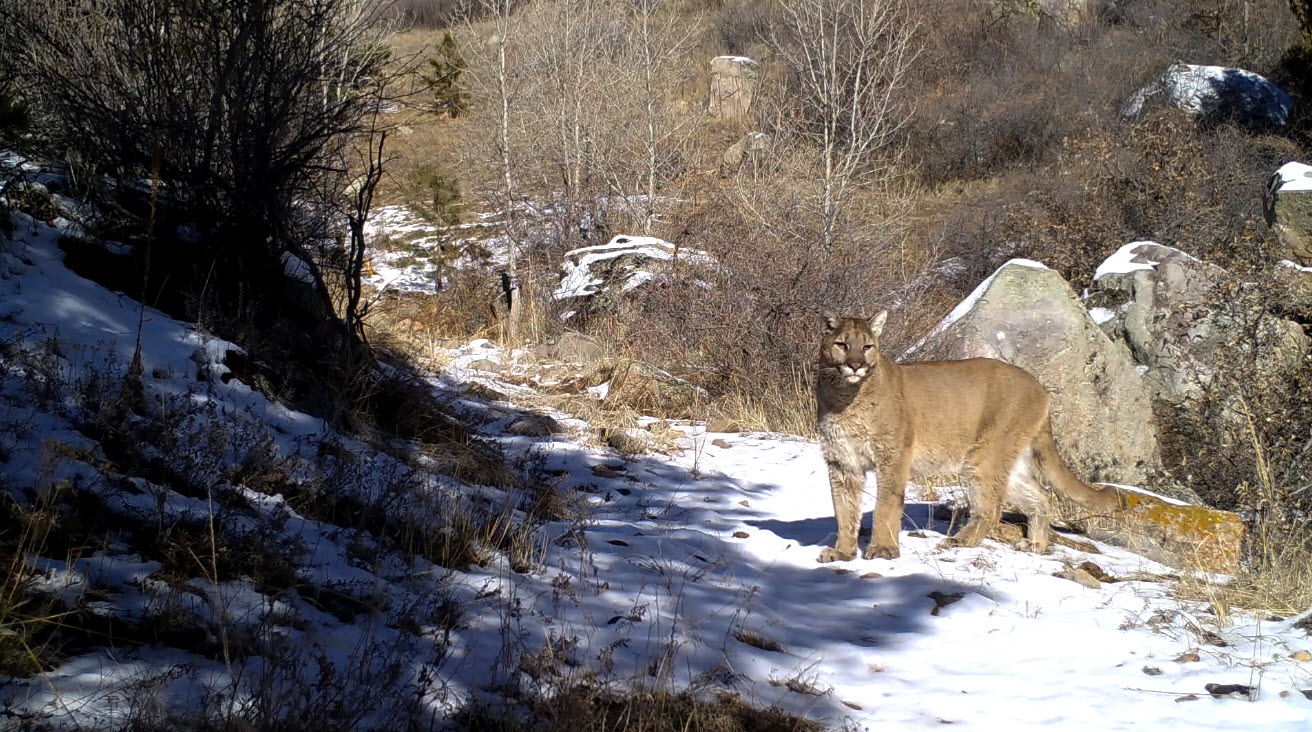
Camera Trapper from Colorado
17 April 2018 8:19pm
Camera trapping workshop, London
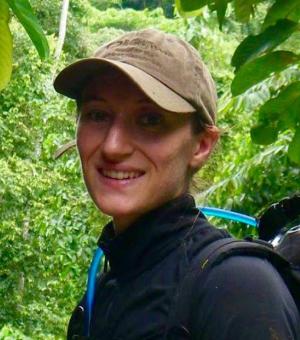 Amy Fitzmaurice
Amy Fitzmaurice
16 April 2018 12:00am
[ARCHIVED]: Camera-trapping data consultancy
13 April 2018 5:00pm
IWT Horizon Scan
10 April 2018 5:54pm
Eddy Expedition Log: Chasing Eddies
 Elisha Wood-Charlson
Elisha Wood-Charlson
10 April 2018 12:00am
What technologies could help us monitor cave invertebrates?
23 July 2016 8:44am
9 April 2018 2:35am
Hi Tony, I'm leading a cross disciplinary group of researchers at Deakin University in Australia to build new technology for monitoring wildlife and engage citizen scientists with collecting data.
We have designed a video trap for monitoring reptiles and amphibians, that uses constant video and has some on-board AI to not save video with nothing in it. Works day and night (UV illumination at night), but uses a lot of power so we have a battery and solar panel arrangement. I expect this could be easily adapted to monitor cave fauna. Let me know if you already have a solution or want to discuss idea further.
Don Driscoll
Thermal imaging scopes
26 March 2018 9:26pm
27 March 2018 2:20pm
Hi Luke,
I'll leave specific recommendations to others who are better qualified ( @Eric+Becker @Rachel+Kramer or @Alasdair - maybe you can advise?) but I did come across something yesterday that may be relevant.
There is a live GroupGets campaign on at the moment (2 days left) for DIY-theromocam kits - not a scope but could do the trick if your budget is restricted as it's under $300 and you're willing to dabble in DIY?
The DIY-Thermocam is a do-it-yourself infrared camera, based on the FLIR Lepton long-wave infrared sensor and the popular Teensy 3.6 ARM Cortex M4 MCU.
The aim of this project is to give private persons, educational institutes and companies access to a portable, affordable and customizable thermal imaging plattform.
There are various applications like finding heat leaks in the insulation of buildings, the analysis of electrical or mechanical components, the detection of persons / animals or even mounting it on a drone, together with the additional video out module.
Constructed as a self-assembly solution, the DIY-Thermocam allows you to take advantage of the versatile possibilities of thermal imaging and to save money at one go.
Everything, from software to hardware, is completely open-source. This allows everyone to modify or extend the functionalities of the device to their own needs.
GroupGets does now offer a complete self-assembly kit, so you don't have to worry about buying all the parts on your own.
A scientific paper is also available, giving an overview about the whole project and its capabilities.
Update: haraldg has written a nice set of tools for post-processing the thermal raw data files. Check it out here. He also published a short article about manual calibration here.
3 April 2018 3:39pm
Hi @Luke_edwards - I just had a chat with my colleagues @Eric+Becker and @ColbyLoucks at WWF who will get back to you with some recommendations from experience with the thermal scopes that we've explored for anti-poaching (FLIR TK and SCOUT III).
Great to see that you're pairing conservation dogs and thermal imaging for wildlife surveys in Australia. In order to select the most cost-effective thermal imaging scope for your needs, it's important to know the range that you require, density of vegetation and size of the species you are monitoring. Can you share a bit more information on your parameters?
3 April 2018 11:03pm
The current project is in open plains. From a handler perspective the distance will be from 20m -100m. I will be working at night so it will be looking for me target, the Plains Wanderer, a small bird. Also it would be used to see other native and domestic animals in the area.
Other projects range from open plains through to rain forests.
The Plant-Powered Camera Trap Challenge
 Alasdair Davies
Alasdair Davies
3 April 2018 12:00am



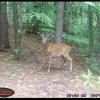















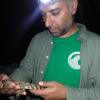

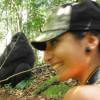


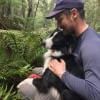

16 March 2018 5:49am
Hi Ned,
Thank you so much for your response!
I absolutely agree- going out and testing flights over water at different angles and times of the day would be best. I'll look into a polarizing filter. I have spoken with some colleagues who recommend flying between noon and 3pm, and also that a cloudy day with diffused light can actually be quite helpful to avoid glint. I will look into the oil spill mapping - sounds very interesting. I've also heard that drones are sometimes restricted from oil spill regions due to risks of battery-caused fires (if the drones fall into the water).
Ved! Fantastic idea. I used to work with him down at Ames, so I will certainly reach out. Thank you for the reminder!
Cheers,
Chippie